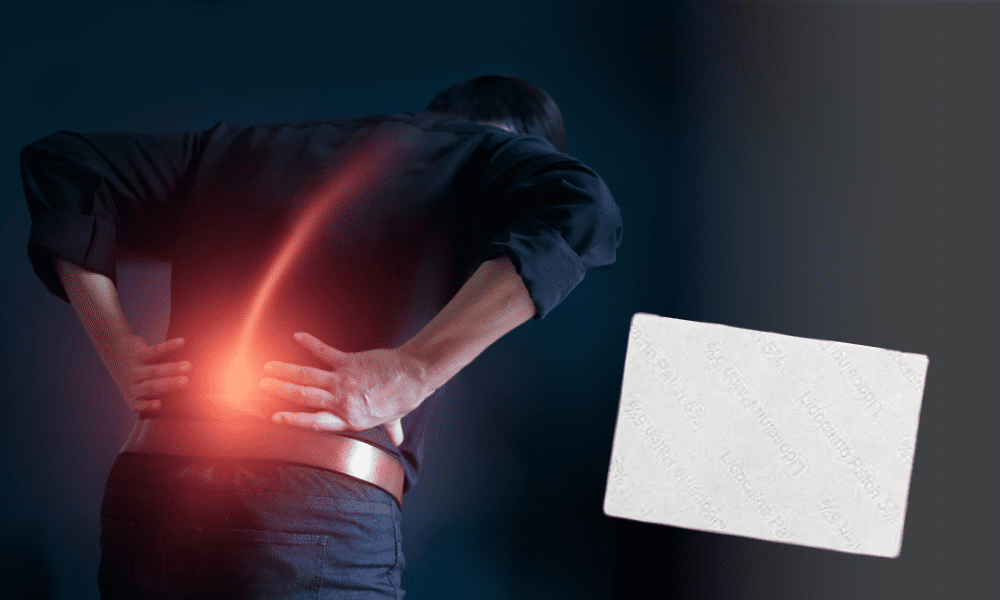Demystifying the Lidoderm Patch: A Comprehensive Guide
Medicine comes in many forms, and the Lidoderm patch is one of the most intriguing. Applied directly to the skin, this patch provides targeted pain relief, leading many to sing its praises. But what really is a Lidoderm patch? How does it work? Are there any risks involved? In this article, we will answer all these questions and more.
The Lidoderm Patch: What’s in a Name?
Unraveling the Terminology
The name Lidoderm patch might sound like something straight out of a sci-fi novel, but its roots are firmly planted in the real world. The term Lidoderm is actually a brand name for a patch that contains the active ingredient lidocaine, a local anesthetic widely used in the medical field. ‘Derm’ stands for dermis, the technical term for the skin. So, a Lidoderm patch is essentially a skin patch that delivers lidocaine directly to the area of the body where it’s needed. Now, isn’t that a smooth way to deliver relief?
Behind the Brand
Lidoderm is one of many products developed by Endo Pharmaceuticals, a company with a long-standing reputation for delivering high-quality medications. With Lidoderm, they’ve certainly hit the nail on the head, providing a treatment that’s easy to use, effective, and innovative.
The Lidoderm Patch is Lidocaine 5% Patch: What Does it Mean?
Lidocaine – a word that sends shivers down the spines of some, while for others, it’s their salvation from persistent pain. So, what exactly is this compound? And how does it tie into the Lidoderm patch?
Lidocaine, first synthesized in 1943, is a local anesthetic used to numb specific areas of the body. It’s commonly used in minor surgeries or dental procedures. However, when it’s embedded in a patch format at 5% concentration (as is the case with the Lidoderm patch), it’s employed as a topical analgesic to soothe more localized external aches and pains.
When applied to the skin, the Lidoderm patch provides targeted pain relief by blocking the pain signals at the site of the discomfort. The patch can offer respite for up to 12 hours, a godsend for those dealing with chronic pain.
Lidoderm Patch: The Power of Lidocaine 5% Unveiled
As an integral part of the modern medicinal toolbox, the Lidoderm patch capitalizes on the efficacy of Lidocaine 5%, a potent local anesthetic. Lidocaine operates at the molecular level, effectively numbing the targeted region by blocking sodium channels in nerve cell membranes, thereby dampening the propagation of pain signals to the brain. Despite its simple, non-invasive application, the Lidoderm patch offers complex therapeutic benefits. It is frequently prescribed for post-herpetic neuralgia, a condition characterized by nerve pain following a shingles outbreak, yet its potential uses extend beyond this.
When applied appropriately, it can provide localized relief without systemic side effects, making it a valued choice among healthcare practitioners and patients alike. Unleashing the power of Lidocaine 5% in a convenient, skin-friendly patch, Lidoderm offers both flexibility and efficacy, a testament to its sophistication in pain management science.
Understanding the Magic Behind the Lidoderm Patch:
The Power of Lidocaine
The power behind the Lidoderm patch lies in its active ingredient – lidocaine. Lidocaine works by numbing the skin and underlying tissues, effectively blocking the pain signals that travel along your nerves. Like throwing a wrench into the gears, lidocaine prevents these signals from reaching your brain, granting you relief from discomfort.
Localized Effect: Targeted Relief
Unlike pills that have a systemic effect, the Lidoderm patch offers localized relief. It works right at the source of the pain, numbing the specific area of the body where it’s applied. This targeted approach not only results in effective pain relief, but it also limits the potential for side effects. A win-win situation, wouldn’t you agree?
Lidoderm Patch: The History and Evolution
Origins of Lidocaine
Like many medical discoveries, the advent of lidocaine was marked by a combination of curiosity, keen observation, and a dash of serendipity. The journey of lidocaine began in the early 20th century when Swedish chemist Nils Löfgren first synthesized it. His discovery would soon morph into a frontline solution for pain relief in the years to come.
The Birth of the Lidoderm Patch
Fast forward to the 1990s. Endo Pharmaceuticals, realizing the potential of lidocaine, repurposed it into a transdermal patch – the Lidoderm patch. Approved by the FDA in 1999, this patch was initially used to manage the pain following herpes zoster infections (shingles), but it quickly found wider applications in the realm of pain management.
How Does the Lidoderm Patch Work?
The Lidoderm patch uses a fascinating mechanism to numb the pain. When applied to the skin, lidocaine, the active ingredient, seeps into the skin and blocks sodium channels on the nerve endings in the skin. This action prevents the conduction of nerve impulses, leading to a numbing sensation. So, why does this matter? Well, it’s simple: no nerve impulses mean no pain signals reaching the brain. End result? You feel less pain, or none at all.
The Lidoderm Patch in Action: Indications and Usage:
Lidoderm Patch for Post-Shingles Pain
Postherpetic neuralgia (PHN) is a common condition where pain persists after a shingles rash has healed. And boy, can it be a pain in the neck! Thankfully, the Lidoderm patch has been shown to be effective in managing PHN, offering much-needed relief to patients.
Beyond Shingles: Other Uses of Lidoderm Patch
While it’s primarily used for PHN, the Lidoderm patch isn’t a one-trick pony. Doctors often prescribe it off-label for other types of neuropathic pain, such as diabetic neuropathy or certain forms of chronic back pain. These uses, while not officially approved, are based on the doctor’s judgement and patient’s unique circumstances.
How to Use a Lidoderm Patch: A Step-by-Step Guide:
Application: It’s as Easy as 1-2-3
Applying a Lidoderm patch isn’t rocket science. Simply clean and dry the affected area, remove the backing from the patch, and stick it on. Like putting a band-aid on a boo-boo, it’s a piece of cake!
Dosage and Duration: It’s Not a Marathon
While using a Lidoderm patch is easy, it’s important not to overdo it. Typically, no more than three patches should be used in a 24-hour period, and each patch should be removed after 12 hours. It’s all about balance, folks!
Side Effects of the Lidoderm Patch: What to Expect
Common Side Effects
Common side effects of the Lidoderm patch are usually mild and may include skin reactions at the application site such as redness, itching, and rash. It’s like the patch is saying “hello!” in its own peculiar way. Most people find that these effects diminish over time.
Serious Side Effects: Know When to Seek Help
While most side effects are mild, there are some serious ones to watch out for. If you experience severe burning, stinging, or irritation under the patch; irregular heartbeats; dizziness or drowsiness; or confusion or blurred vision, reach out to your healthcare provider pronto. Don’t play around with your health!

Frequently Asked Questions About Lidoderm Patch
Can Lidoderm patch be used for knee pain?
While the Lidoderm patch is not officially approved for knee pain, some doctors may prescribe it off-label for this purpose. Remember, always consult with your healthcare provider before using it for non-approved indications.
Can I use Lidoderm patch while pregnant?
If you’re expecting a bundle of joy, talk to your doctor before using the Lidoderm patch. While there’s no definitive evidence it can harm an unborn baby, it’s best to err on the side of caution.
Can Lidoderm patch be used for back pain?
Yes, the Lidoderm patch can be used for certain types of back pain, especially those of a neuropathic origin. However, always seek professional medical advice before starting any new treatment.
Can I cut the Lidoderm patch?
Yes, you can! The Lidoderm patch can be cut into smaller pieces if needed. Just make sure to handle the cut pieces with clean, dry hands to avoid contamination.
Can Lidoderm patch cause weight gain?
No, using the Lidoderm patch does not typically lead to weight gain. If you notice unexplained changes in your weight, it’s best to consult with your doctor.
How long does it take for the Lidoderm patch to work?
The Lidoderm patch typically starts working within 1-2 hours of application, offering swift relief. Like a knight in shining armor, it’s always ready to come to the rescue!
Conclusion
The Lidoderm (lidocaine 5%) patch offers a unique and effective approach to managing certain types of pain. With its targeted delivery of lidocaine, it can provide significant relief for conditions like postherpetic neuralgia, sciatica, and some forms of neuropathic pain. Always remember, though, that while this article is informative, it’s not a substitute for professional medical advice. Always consult with your healthcare provider before starting or changing any medication regimen.
Performance Pain and Sports Medicine will soon have prescription Lidocaine Patches available for you via telemedicine right here on this site, or you can make an appointment to see Dr. Suzanne Manzi in person at the Houston or League City locations in Texas. Dr. Matthias Wiederholz is also available for in person visits in Houston, TX and Lawrenceville, NJ. Contact us now to learn more.

















